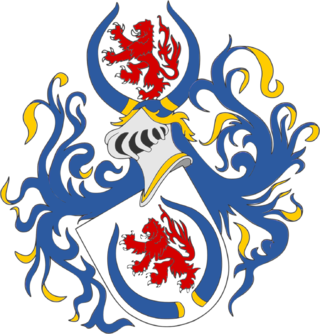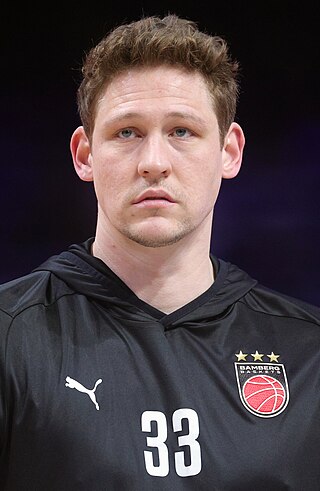
Physical education, often abbreviated to Phys. Ed. or PE, and sometimes informally referred to as gym class or simply just gym, is a subject taught in schools around the world. PE is taught during primary and secondary education and encourages psychomotor, cognitive, and effective learning through physical activity and movement exploration to promote health and physical fitness. When taught correctly and in a positive manner, children and teens can receive a storm of health benefits. These include reduced metabolic disease risk, improved cardiorespiratory fitness, and better mental health. In addition, PE classes can produce positive effects on students' behavior and academic performance. Research has shown that there is a positive correlation between brain development and exercising. Researchers in 2007 found a profound gain in English Arts standardized test scores among students who had 56 hours of physical education in a year, compared to those who had 28 hours of physical education a year.

Jovan Jovanović Zmaj Gymnasium is a secondary school in Novi Sad, Serbia. It is named after Jovan Jovanović Zmaj, a Serb poet. It was founded in 1810 by a donation of a wealthy merchant Sava Vuković from Novi Sad. Over the years the school developed into a prestigious institution whose alumni include numerous notable historical individuals.
The House of Kantakouzenos, also found in English-language literature as Cantacuzenus or Cantacuzene, was a Byzantine Greek noble family that rose to prominence in the middle and late Byzantine Empire. The family became one of the empire's wealthiest landowners and provided several prominent governors and generals, as well as two Byzantine emperors between 1347–1357.

Vushtrri is a city and municipality located in the Mitrovica District in Kosovo. According to the 2011 census, the town of Vushtrri has 26,964 inhabitants, while the municipality has 69,870 inhabitants. Vushtrri is surrounded by the city of Mitrovica to the north, Podujevë in the east, Obiliq in the south, Drenas in the south-west, and Skenderaj in the west. The municipality of Vushtrri has 67 villages.

Mara Branković or Mara Despina Hatun, in Europe also known as Amerissa, Sultana Maria or Sultanina, was the daughter of Serbian monarch Đurađ Branković and Eirene Kantakouzene. As the daughter of Despot Đurađ, wife of Sultan Murad II, and stepmother of Mehmed II the Conqueror, she came to play a significant role in the diplomatic negotiations of the Ottoman Empire. She became a leading member of the pro-Ottoman party in the Balkans and one of the most powerful women of the 15th century.

The House of Branković is a Serbian medieval noble family and dynasty. According to genealogies created in the first half of the 15th century, the family descends via female lineage, through marriage with the Nemanjić dynasty. The family rose to prominence during the fall of the Serbian Empire. The original family domains were centered in the Kosovo region. Later family members extended their rule over all remaining unconquered regions of Serbia making them the last sovereign rulers of medieval Serbian state. The dynasty ruled the Serbian Despotate from 1427 to 1459 and their descendants continue to claim the throne of the Despotate Serbia, some having entered the ranks of the Hungarian aristocracy, while other descendants of the dynasty continue to go by a courtesy title.

The Cathedral of the Transfiguration of the Lord is a Serbian Orthodox cathedral located on the Petar Preradović Square in Zagreb, Croatia. It was built in 1865–66 according to designs of architect Franjo Klein. It is ecclesiastically part of the Metropolitanate of Zagreb and Ljubljana and is known as the Zagreb Orthodox Cathedral. Due to 2020 Zagreb earthquake the Cathedral went to re-construction due to mayor damages that occurred.

The Kantakuzina Katarina Branković Serbian Orthodox Secondary School, abbreviated as SPOG, is a coeducational gymnasium affiliated with the Metropolitanate of Zagreb and Ljubljana. It is situated in Zagreb, capital city of Croatia, and stands as the only non-seminary high school of the Serbian Orthodox Church in the territory of the former Yugoslavia.

Islamic Secondary School Dr. Ahmed Smajlović is a private secondary school (gymnasium) situated in Zagreb, Croatia. Islamic Secondary School Dr. Ahmed Smajlović carries the educational programs of general secondary school direction. Classes are taught in Bosnian language.

The Order of Kantakuzina Katarina Branković is an ecclesiastical honor bestowed by the Metropolitanate of Zagreb and Ljubljana, an eparchy (diocese) within the Serbian Orthodox Church. This order is conferred upon individuals in recognition of their contributions to the Serbian Orthodox Church in the regions encompassing Croatia, Slovenia, and Italy.

The Association for Serbian language and literature in Croatia is a non-profit professional organization that brings together scientists and technical workers engaged in studying and teaching of Serbian language and literature in Croatia. The association operates throughout Croatia and its headquarters are located in Vukovar. The association was established in 1998, after the completion of the UNTAES mission in the region, with ambition to work on protection of the Serbian language and the literature of Serbs in Croatia, engage in the study of the history and culture of the Serb people in Croatia, and present its cultural heritage.

The Serbs of Zagreb are a traditional minority group that lives in the Croatian capital Zagreb.

Gimnazija Mostar is a gymnasium in Mostar, Bosnia and Herzegovina. Formerly called Gimnazija "Aleksa Šantić" in honour of the eponymous poet, it is nowadays popularly referred to as Stara gimnazija.

Ljubomir Kovačević was a Serbian writer, historian, academic, and politician. He is one of the early creators of the Serbian critical historiographical school and fighters for the separation of historical science from tradition. Kovačević directly influenced the political and cultural activity of Serbia at the end of the nineteenth century. He and Ljubomir Jovanović were the authors of the well-known two-volume "Istorija srpskog naroda za srednje škole" in the Kingdom of Serbia. Both Kovačević and Jovanović were Ministers of Education at one time and, as historians, using a wealth of verified information, professionally and convincingly refuted many myths that were passed down through the ages.
The Serbian language is one of the officially recognized minority languages in Croatia. It is primarily used by the Serbs of Croatia. The Croatian Constitution, Croatian Constitutional law on national minorities rights, Law on Education in Language and Script of National Minorities and Law on Use of Languages and Scripts of National Minorities define the public co-official usage of Serbian in Croatia. Serbian and Croatian are two standardized varieties of the pluricentric Serbo-Croatian language. The majority of Serbs of Croatia use Ijekavian pronunciation of Proto-Slavic vowel jat except in the Podunavlje region in Vukovar-Syrmia and Osijek-Baranja Counties where local Serb population use Ekavian pronunciation. Post-World War II and Croatian War of Independence settlers in Podunavlje which have come from Bosnia, Dalmatia or Western Slavonia either use their original Ijekavian pronunciation, adopted Ekavian pronunciation or both of them depending on context. In 2011 Census majority of Serbs of Croatia declared Croatian standardized variety as their first language with Ijekavian pronunciation always being required standard form in Croatian. While Serbian variety recognizes both pronunciations as standard, Ekavian is the more common one as it is the dominant one in Serbia, with Ijekavian being dominant in Bosnia-Herzegovina, Montenegro and Croatia.

Italian Secondary School in Rijeka is a public high school for the Italian ethnic minority in the city of Rijeka, Croatia. The school was established in 1888 and been in operation continuously since then. The school building is protected as a cultural heritage. Building was renovated in the period from 2006 to 2008 with support of City of Rijeka and Primorje-Gorski Kotar County.

Patrick Heckmann is a German professional basketball player for Hamburg Towers of the Basketball Bundesliga (BBL). He played college basketball for Boston College.

Katarina Branković, also known as Kantakuzina was the Countess of Celje, through the marriage with Count of Celje Ulrich II. A Serbian princess, she was the daughter of Despot Đurađ Branković and Byzantine princess Irene Kantakouzene. She is remembered for writing the Varaždin Apostol (1454), and her endowment of the Rmanj Monastery.
Isidora Sekulić Gymnasium is a secondary school in Novi Sad, Serbia. It is named after Isidora Sekulić, a famous Serbian writer. It was founded in 1990. The gymnasium has two educational courses, science-mathematics course and humanities-linguistics course, represented with 8 classrooms a year and 32 classrooms in total. Classes are done exclusively in Serbian.

















